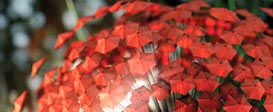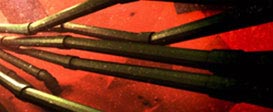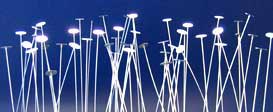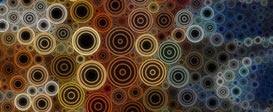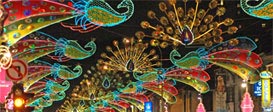Scattering
![]() Full Conference
Full Conference ![]() One-Day Full Conference
One-Day Full Conference
Wednesday, 10 December, 08:30 - 12:15
Room 305
Level: Intermediate
A taxonomy of scattering phenomena and how to treat them efficiently, by leveraging the wealth of knowledge from computer graphics and computer vision. This course shows a wide range of multidisciplinary applications in both overlapping fields, from appearance modeling to vision in bad weather, and reviews measurement techniques.
Computer graphics and computer vision deal with acquiring, interpreting, and presenting the rich visual world around us. These are exciting multidisciplinary fields of research with a wide spectrum of applications that affect our daily lives. However, most current computer-generated imagery represents scenes with clear atmospheres, neglecting light scattering effects. Analogously, most computer-vision systems are not successful when deployed in uncontrolled outdoor environments.
This course addresses the challenges presented by light scattering in computer graphics and computer vision. Both fields have seen great advances over the past few years, but most of the existing algorithms still assume that light emitted by a source or reflected off a surface reaches the sensor unaltered. From a computer graphics perspective, this is due mainly to the complex interactions that occur and the high computational costs of simulating them. In computer vision, scattering has traditionally been considered as noise that one should ideally get rid of.
Scattering effects are one fundamental hurdle that must be overcome to significantly extend and enhance current state-of-the-art graphics and vision techniques and achieve successful impact in a wide range of domains. Given the increasing overlap between computer graphics and computer vision, including hot research fields such as computational photography, this course is useful for practitioners in both communities and everybody who studies the intersection of the two.
Prerequisites
None.
Intended Audience
This course is intended for people involved in computer graphics, computer vision, or related fields such as computational photography. It is particularly relevant to SIGGRAPH Asia attendees, as it provides a good understating of scattering phenomena, state-of-the-art techniques to simulate it and treat it, and a wide range of applications. It is especially useful for attendees who are interested in particular applications such as medical imaging, oceanography, driving simulators, and game production.
Instructors
Diego Gutierrez
Universidad de Zaragoza
Henrik Wann Jensen
University of California, San Diego
Srinivasa Narasimham
Carnegie Mellon University
Wojciech Jarosz
University of California, San Diego
Instructor Bios
Diego Gutierrez
Diego Gutierrez is an associate professor in computer graphics at the Universidad de Zaragoza, where he received his PhD in computer science. His areas of expertise include physically based global illumination (specializing in participating media), perception, and novel image-processing techniques. He is currently Chair of the SIGGRAPH Asia 2008 Sketches & Posters programme and was Papers Chair for ACM Graphite in 2006. He has served on many other international conference committees, including SIGGRAPH (Sketches) and Eurographics (Papers).
Henrik Wann Jensen
Henrik Wann Jensen is an associate professor at the University of California, San Diego. His contributions to computer graphics include the photon mapping algorithm for global illumination and the first technique for efficiently simulating subsurface scattering in translucent materials. In 2004, he received an Academy Award (Technical Achievement Award) from the Academy of Motion Picture Arts and Sciences for pioneering research in rendering translucent materials. He also became a Sloan Fellow and he was selected as one of the top 10 scientists in 2004 by Popular Science magazine.
Srinivasa Narasimham
Srinivasa Narasimhan is an assistant professor in the School of Computer Science at Carnegie Mellon University. He obtained his masters and doctoral degrees in computer science from Columbia University in 2000 and 2004, respectively. His research interests are at the intersection of computer vision, computer graphics, and optics. He received a Best Paper award in IEEE CVPR 2000 and a CAREER award from NSF in 2007.
Wojciech Jarosz
Wojciech Jarosz is a computer graphics PhD student at the University of California, San Diego. His main research interest is production-quality global illumination techniques, specifically for participating media, and his current list of publications includes three SIGGRAPH papers on those topics. He received his BS in computer science from the University of Illinois at Urbana-Champaign and his MS in computer science from the University of California, San Diego.

